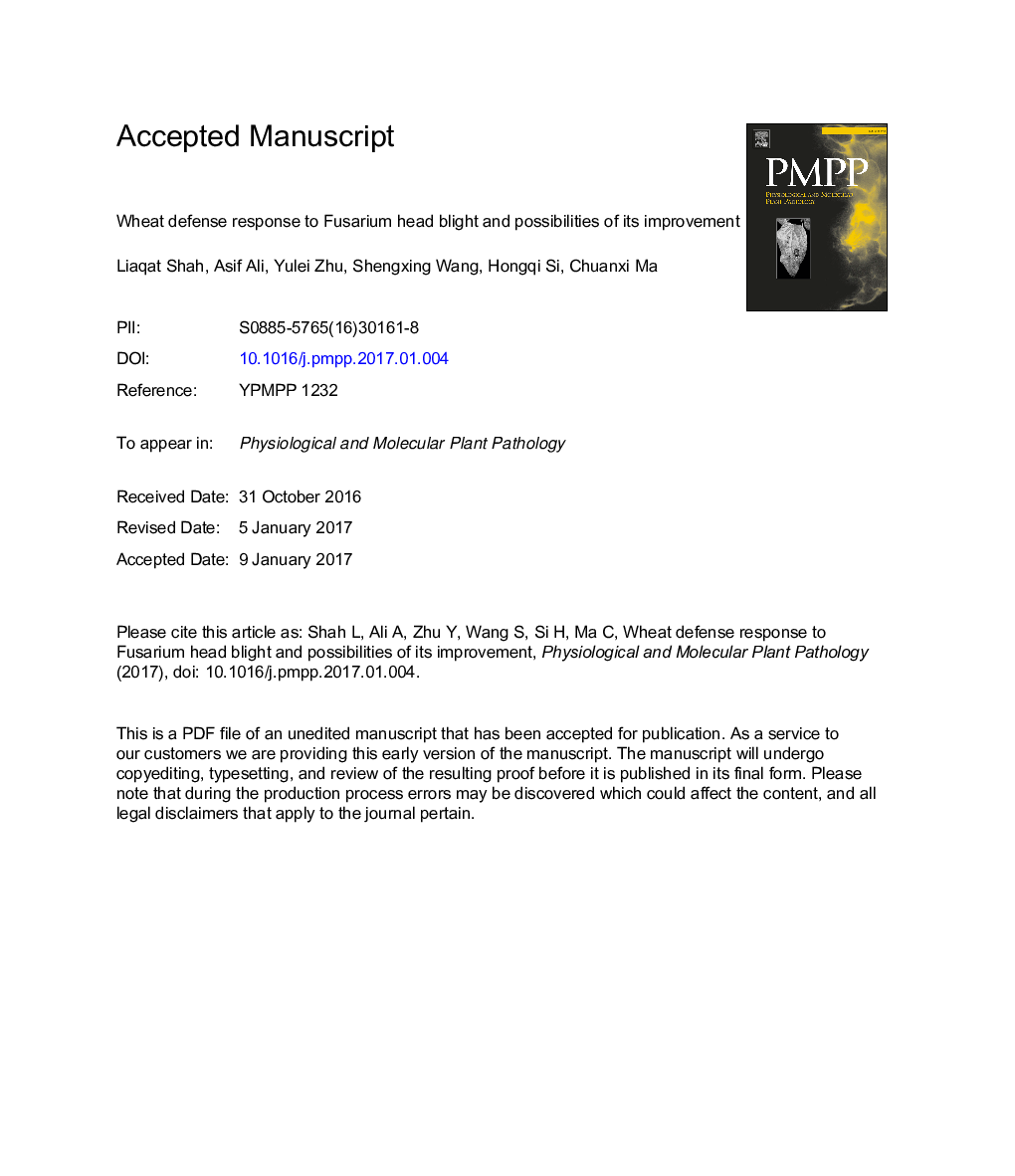| Article ID | Journal | Published Year | Pages | File Type |
|---|---|---|---|---|
| 5592603 | Physiological and Molecular Plant Pathology | 2017 | 37 Pages |
Abstract
F. graminearum is an agent that causes Fusarium head blight (FHB), which greatly reduces wheat production. FHB has a direct influence on human and on animal health because of the mycotoxin production in the wheat grain. Study of Fusarium spp. and its association with the host is facilitated by the availability of F. graminearum's functional genomic sequence and proteomic resources. These are increasingly used to investigate the biochemical composition of fungi and their biological interactions. Differentially activated defense responses such as transcriptomic, proteomic and metabolomics are studied to identify the resistance mechanisms against the initial Fusarium infection and infection of host tissues. FHB resistance associated with secondary cell wall thickening is a result of phenolic glucoside, hydroxycinnamic acid and flavonoid accumulation. The results in this paper increase our understanding of the molecular association between F. graminearum and its host. Knowledge of the host, pathogens and their interactions will be efficient tools for planning new and useful approaches to control FHB disease.
Keywords
Related Topics
Life Sciences
Agricultural and Biological Sciences
Plant Science
Authors
Liaqat Shah, Asif Ali, Yulei Zhu, Shengxing Wang, Hongqi Si, Chuanxi Ma,
